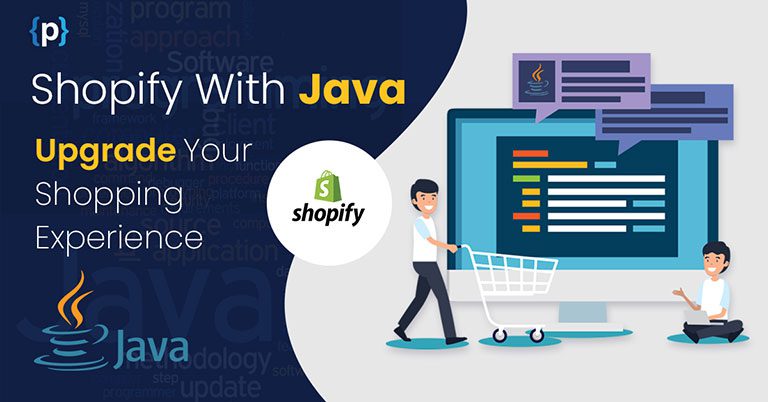Shopify With Java – Upgrade Your Shopping Experience
Owning an e-commerce platform can be an exciting and rewarding endeavor. However, like any business, it has its fair share of challenges.
Are you concerned about the troubles in the world of e-commerce websites?
There is no need to worry. Let us delve into the world of e-commerce and discover its potential through our helpful guide: “How To Unleash Your E-Commerce Potential”
In this guide, you will learn the following:
● What Is Shopify?
● Why Is Java Best?
● Shopify Rest API in Spring Boot
● Shopify Webhooks with JAVA
What Is Shopify?
Shopify is an all-in-one e-commerce platform that meets all your commerce needs. With Shopify, merchants can build and customize their online store and then sell their products or services on the web, mobile, in person, or even across multiple social media marketplaces.
Shopify’s easy setup allows businesses to get their online stores up and running quickly. After establishing the foundational elements, exploring and expanding into new product lines and sales channels becomes simpler.
Shopify’s Point-Of-Sale (POS) integration streamlines in-person transactions. This means that whether you are selling products at a retail storefront, pop-up shop, market, or anywhere else, the process will be simplified. The system links all your sales channels seamlessly and centralizes your customer information, product data, and administrative activities in one place.
Let’s Begin
Here is the link to create your Shopify account: Create Your Account
After creating an account you need to build your store: Set Up Your Store
Why Is Java Best?
There are a few reasons why Java is a smart choice when it comes to your Shopify integration:
1. Enhanced Functionality
A Java-driven Shopify store offers advanced search capabilities, personalized recommendations, complex pricing algorithms, and third-party integrations.
2. Improved Performance
Shopify stores built on Java’s robust and scalable platform can manage high traffic volumes and complex operations efficiently, resulting in improved performance and seamless customer shopping experiences.
3. Streamlined Business Processes
You can automate data synchronization, inventory management, and order processing by integrating Java-based backend systems with Shopify.
Shopify REST API in Spring Boot
REST is one of the de-facto standards for building web services because it embraces the precepts of the web, such as caching, redirecting, forwarding, security encryptions, and authentications, among others. By building on top of HTTP, REST APIs provide a means to build backward capabilities, evolvable APIs, and scalable, secure services.
Integrating Shopify’s REST API with a Spring Boot app opens several powerful and resilient e-commerce possibilities. Developers easily create feature-rich and customizable e-commerce applications using it.
Steps For Setting Up Rest API
1. Install an app in the store with Admin Settings after the partner account and store are set up. This is done by going to “Store Settings” and selecting “APPs and Sales Channels” from the menu on the left. Click on the Develop Apps button at the top, and then select Create App.
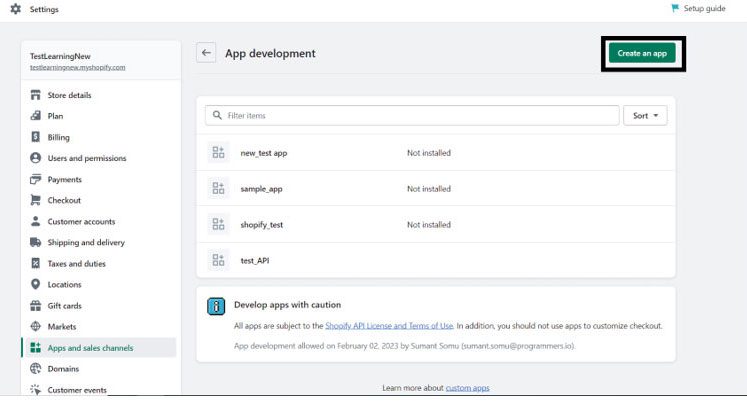
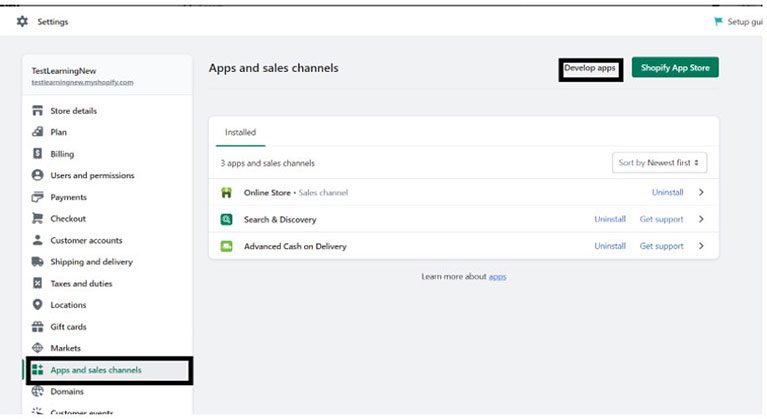
2. Choose Admin Configurations since Admin APIs are needed. After the configurations are selected, select the permissions that will be needed for this application.
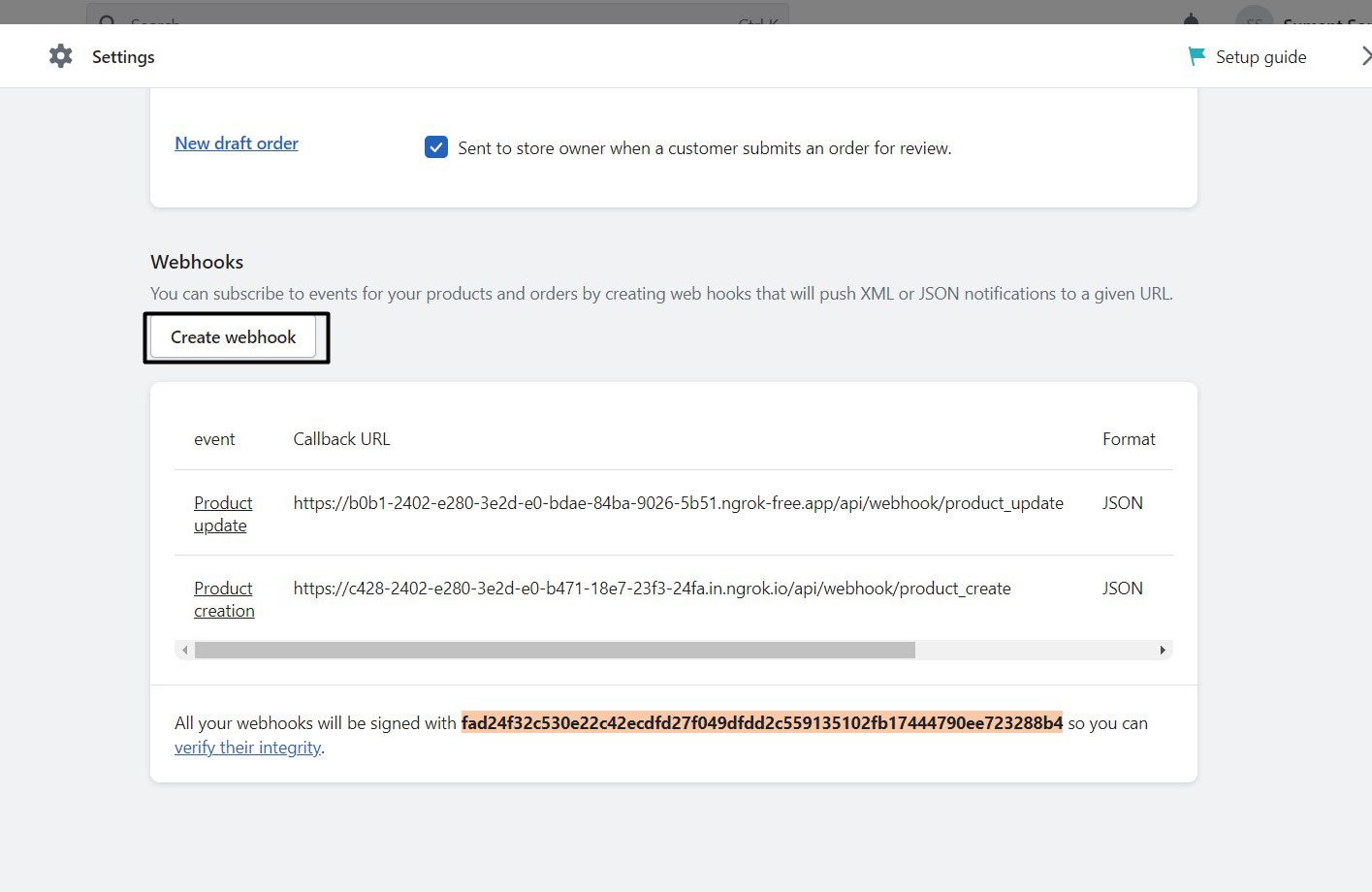
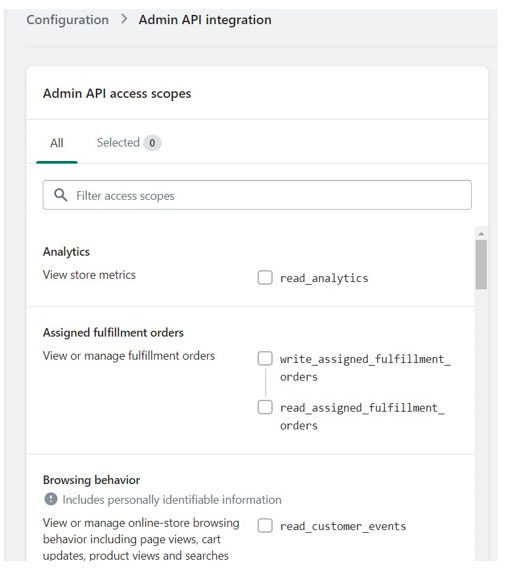
3. The next step is to install the app in the store and place the access token somewhere safe to enable access to various Shopify resources, such as products, orders, shops, etc.
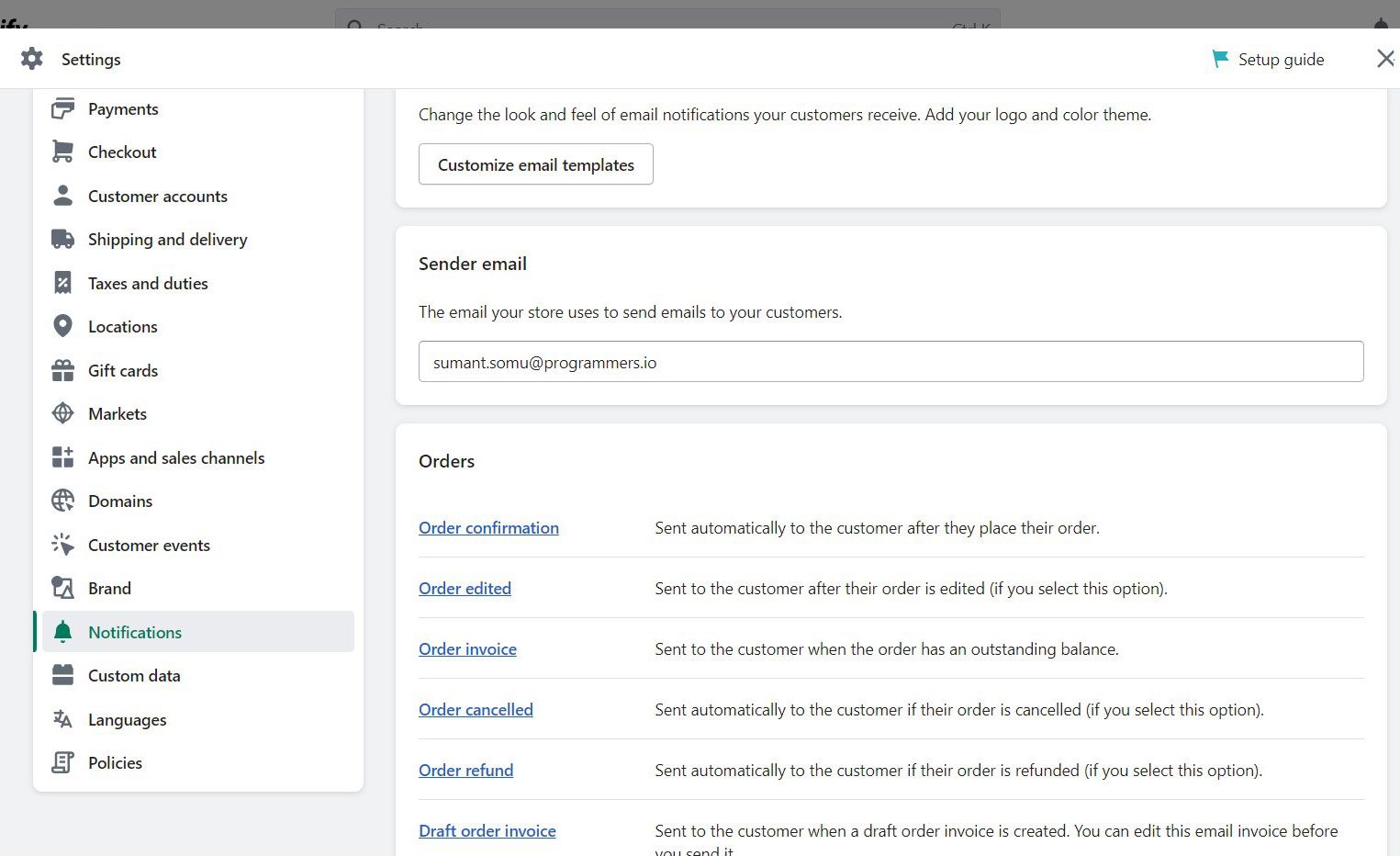
4. To access the rest of the API, obtain the full URL. According to this documentation, Shopify’s REST API URL consists of the store name followed by .myshopify.com/, then admin/ for admin resources, then api/xxxx-xx indicating the API version, and then the resource to access, such as orders, products, a shop, etc.
For example:
https://testlearningnew.myshopify.com/admin/api/2023-01/products.json
{ Shop Name } { API Version } { Resource }
Find out more about Shopify REST API at this link: REST API
Now that the REST API and access token are created, they can be used in the Spring Boot application as any other REST API.
Shopify Webhooks with JAVA
Shopify Webhooks provide a powerful synchronization tool for e-commerce applications to receive real-time notifications. The API also allows Shopify to send developers HTTP callbacks (webhooks) whenever certain events occur in the online store, such as new orders, product updates, or customer registrations.
Steps For Setting Up Webhooks:
1. Adding webhooks is as easy as going to Settings > Notifications and selecting from the list.
2. To access the webhooks section, scroll down and click on the “Create Webhook” button. This will display the event for the webhook, the format in which it will send data and the URL in which it will send data.
3. It will send a POST request to the URL, therefore, it is necessary to add POST endpoints to the Spring Boot application to collect the returned webhook data.

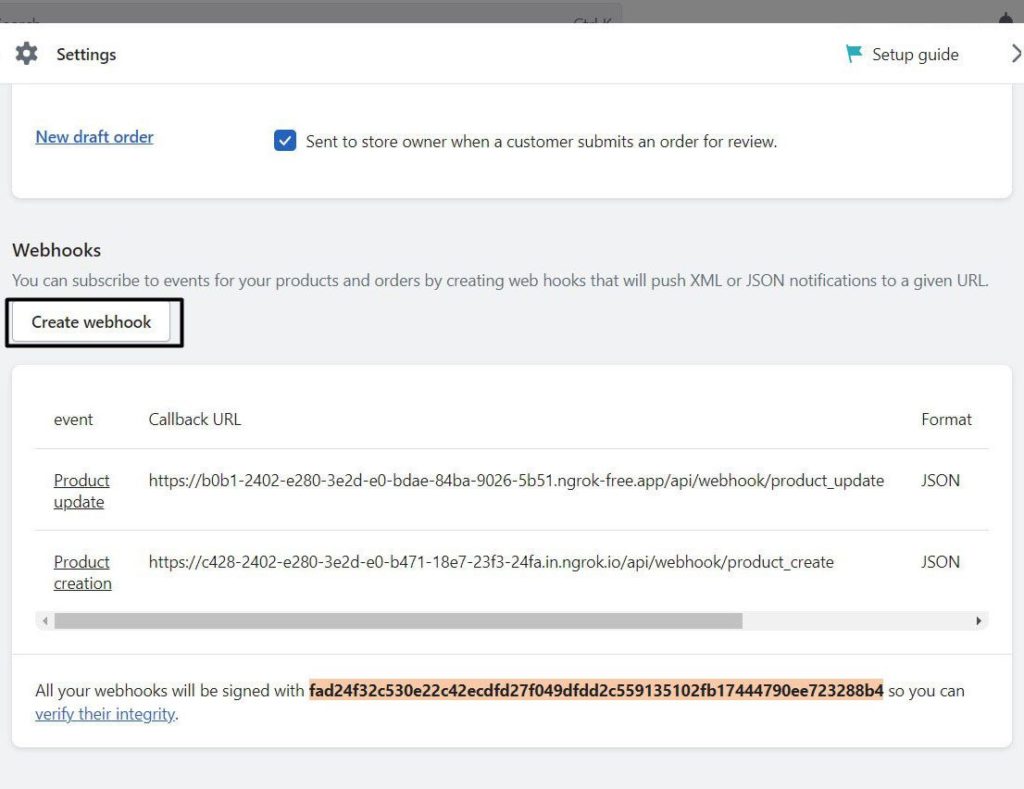
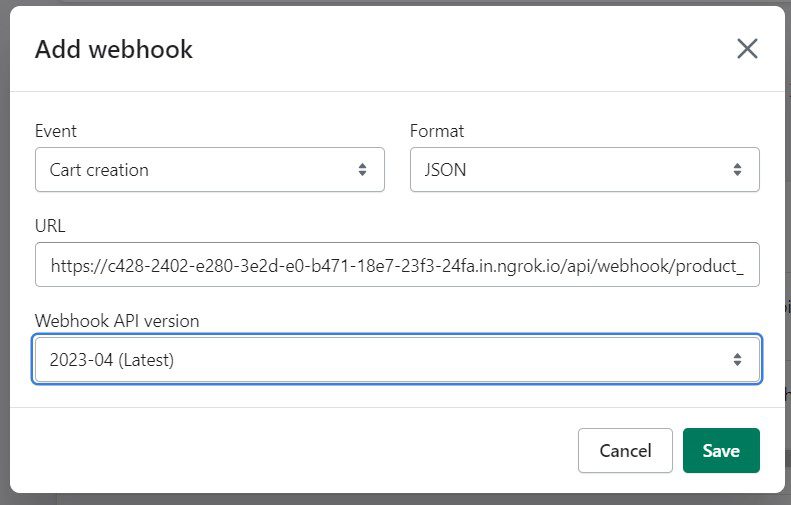
NOTE:
The webhook response will not be sent to a local host URL or an HTTP link, therefore, Tunneling the Localhost URL to a Public URL using a Tunneling Service is necessary.
Here is a link to help with localhost URL tunneling. Ngrok Tunneling Service
Other tunneling services are also available.
It is possible to evaluate the URL by sending a test notification as shown in the figure, which creates a dummy event.
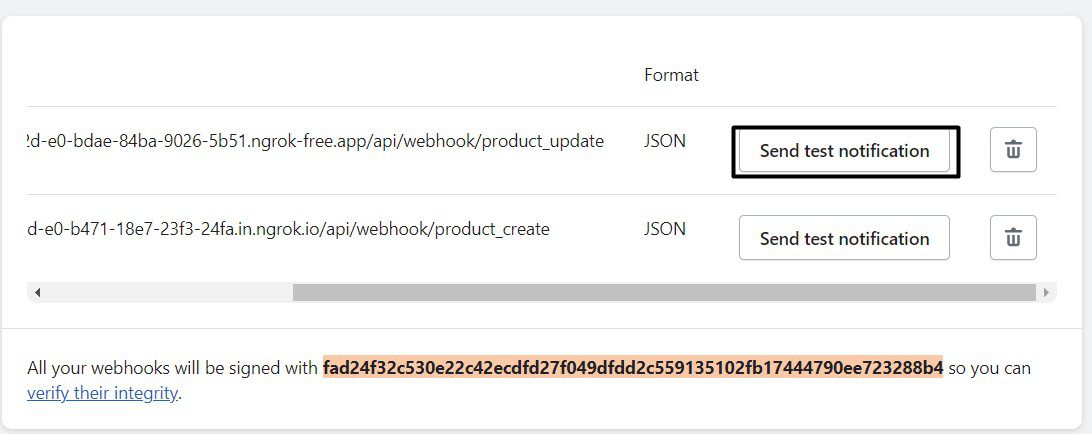
Another thing to note is that webhooks can also be created from the Spring Boot Application using the Admin APIs with the webhook resource as with other resources.
Read here: How To Create a Webhook
Conclusion
Integrating Java with Shopify offers tremendous potential for expanding the functionality, scalability, and customization of the e-commerce store. When leveraging Java’s vast ecosystem and Shopify’s robust platform, you unlock a seamless shopping experience for your customers and streamline their business processes.
